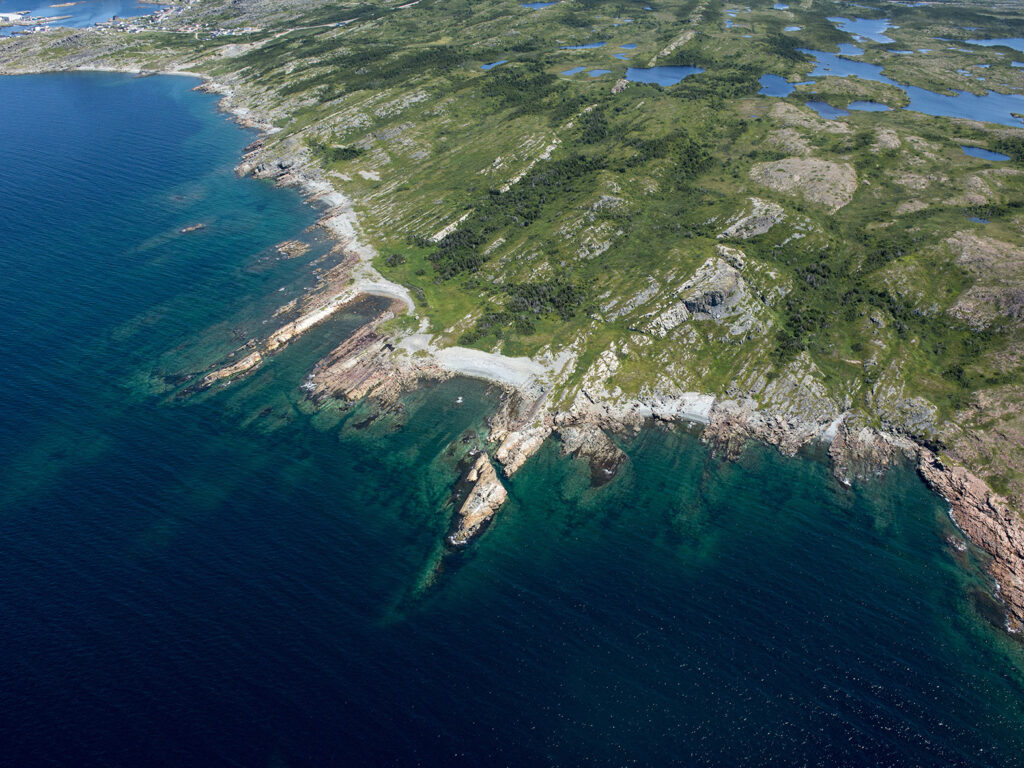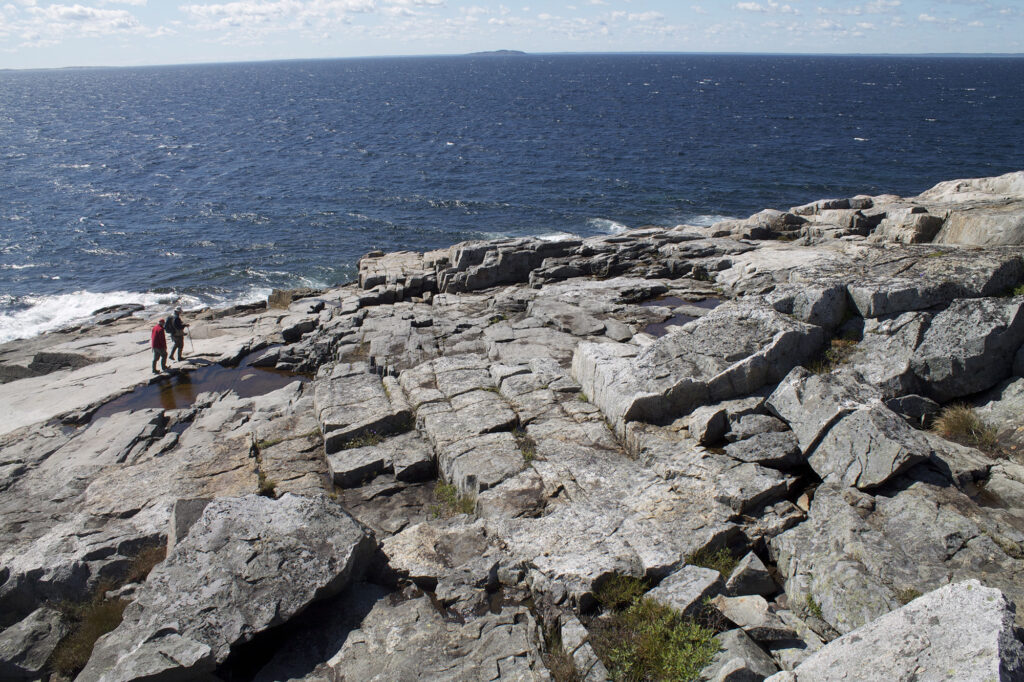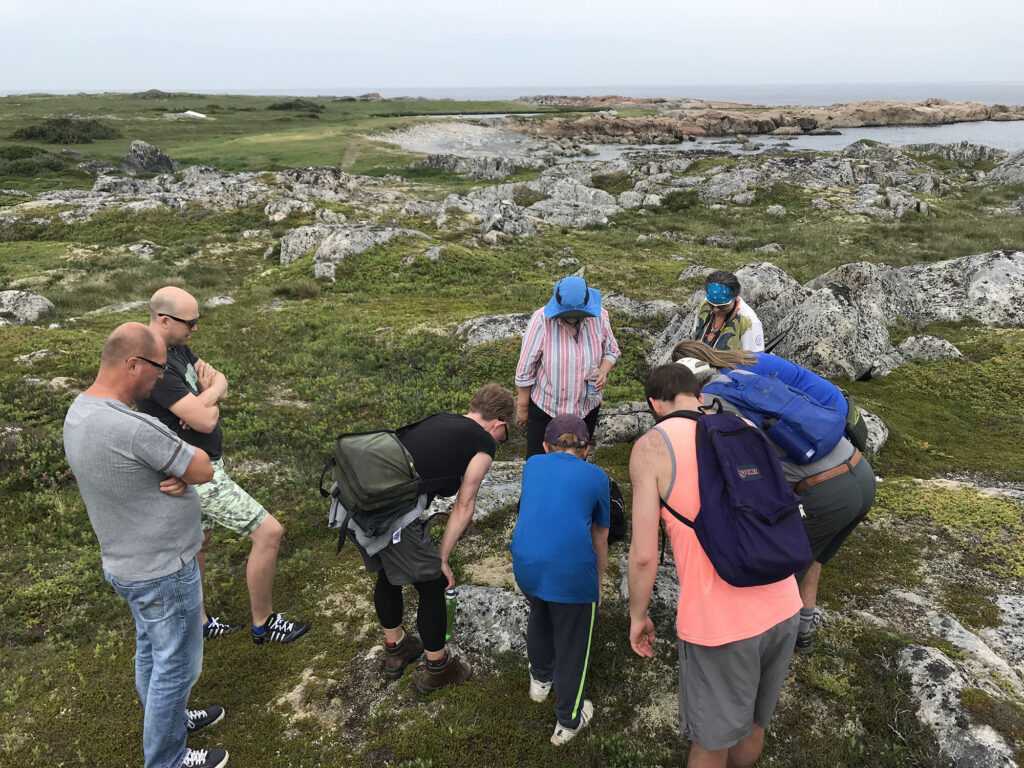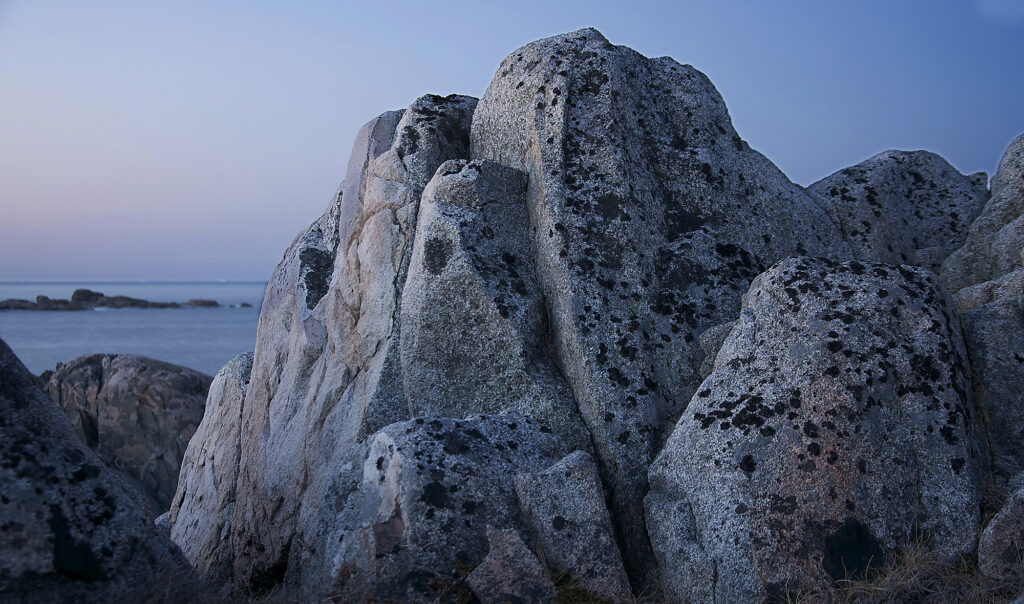
A fellow of the Royal Canadian Geographical Society, Peter Croal has been working in the field of environmental assessment and international development for over 35 years; his career has taken him to over 40 countries and he sits on the boards of several not-for-profit development organizations. This summer was Peter’s fourth year as a Geologist-in-residence with Shorefast.
The following is a condensed version of a conversation with Peter Croal.
What can we learn from studying the rock beneath us? How does it deepen our sense of connection to the world?
When I take people on hikes around Fogo Island and Change Islands, I always start by saying, we come from the rocks and planetary processes. We wouldn’t be alive if it wasn’t for the minerals and elements that make up rocks and enter our food chain.
Life started three and a half billion years ago and the landforms we see today are all the result of plate tectonics, glacier movements and other earth systems. Moraines, lakes and rivers, ocean currents, fjords, sand deposits – these things form the basis of many of our cities and harbours and many of our industries. How the landscape is shaped and formed determines how our human civilization came to be; that’s all related to the rock cycle and planetary processes. And it is not a static system. The earth is constantly changing and re-inventing itself.
If we understand that we are part of a larger system called life – if we understand how it works – perhaps we can show more respect to those systems and protect and nourish them. The Grand Banks, which is home to historically one of the greatest fisheries, well, that was created by glacial and oceanic process.

What is the role of a residency program that brings geologists to Fogo Island right now?
Well, it is education but also inspiration and stimulation. What the visiting geologists try to do is not just talk about rocks (eg – this is granite; this is sandstone). Rather: what is our relationship to these rocks? What does it mean when you see a volcanic rock? We see them as clues to an evolving and exciting story.
We take the story that the landscape is telling us and translate it for other people to enjoy. If you don’t study geology, you are basically walking on top of a book that you can’t read. We want you to read that story. We want you to see the connections to everyday life through the rocks and landforms that are under our feet.
What role can geology play in community economic development?
Fogo Island is one of the few places where you can walk across a magma chamber and at the same time see volcanic and sedimentary rocks in such proximity. Because the rocks are so well exposed, you can experience geological features that are hard to find in other places of the world. That brings people to a place. With Shorefast’s growing community science program, there are more opportunities to position Fogo Island as a hotbed for scientific research and expand career paths and opportunity in this place.
On a more informal level, a lot of people come to meet the geologists-in-residence during hosted office hours who don’t know anything about geology but say “I just love rocks.” This is a place that sparks fascination and has a story to tell.
How do you integrate other disciplines into your hikes and talks? And what value do you see in that?
Just by nature of being outside and engaging with the world you touch all kinds of different disciplines. Two of the collaborative events that I co-hosted with art-based practitioners (one of whom was Alexa Kumiko Hatanaka, an artist and contributor to Fogo Island Arts’ “Meltwater” exhibition) were focused on marine health, rising water levels, and climate change. Ocean health is changing because of climate change and industrialization. Oceans are becoming more acidic and certain currents are starting to change. All of this affects the fishery, which is of course relevant to Fogo Island and Change Islands.
When two people with different backgrounds lead an event there’s an opportunity to speak about your discipline in a new way. Climate change is real, and shorelines are going to change. Having Alexa and me working together brings an arts-based audience and a science-based audience together and it forces us to think about things differently, exchange new ideas and ultimately understand what is at stake from a new perspective.

How do you get people to care about their natural environment and see themselves as a part of it?
You have to tell a story. Facts, science, and fear don’t necessarily work that well. You have to find where people are at and build a story around their understanding of how the world works. And you need to explore what interests people through their own experiences. Instead of throwing science at people, start with: here you are standing on a rock. What does it mean to you as a person and what is your relationship to this planet? What is the story that this rock or landform is telling you that can affect your life?
In a 5-minute conversation I try to get across that you are here because of a 3.5-billion-year experiment. Ninety-five percent of all life that has existed on the planet has come and is now extinct. You are seeing the remaining 5% that has made it through. To survive you must be adaptable and resilient. And right now, we are not very adaptable or resilient as a species. We still want to party as if there is an infinite supply of oxygen, soil, and fresh water. And there isn’t. Earth’s life supporting systems are sending us messages every day through increased fires, floods, storms, biodiversity loss and disease.
Shorefast’s sustainability efforts, the amazing rocks of Fogo and Change Islands, and the Fogo Island Inn are natural drawing points for people. Many of the people who come to the Inn and to Fogo Island are interested in having these conversations especially after the experience of being exposed to an economic development model that is trying to live more harmoniously with people and place. I meet a lot of people who are taking what’s happening here in the arts, environment, and the economy back home to their communities. Shorefast and Fogo Island are catalysts and crucibles for generating and exchanging dynamic ideas around sustainability. The hope is that those ideas continue to spread elsewhere.
